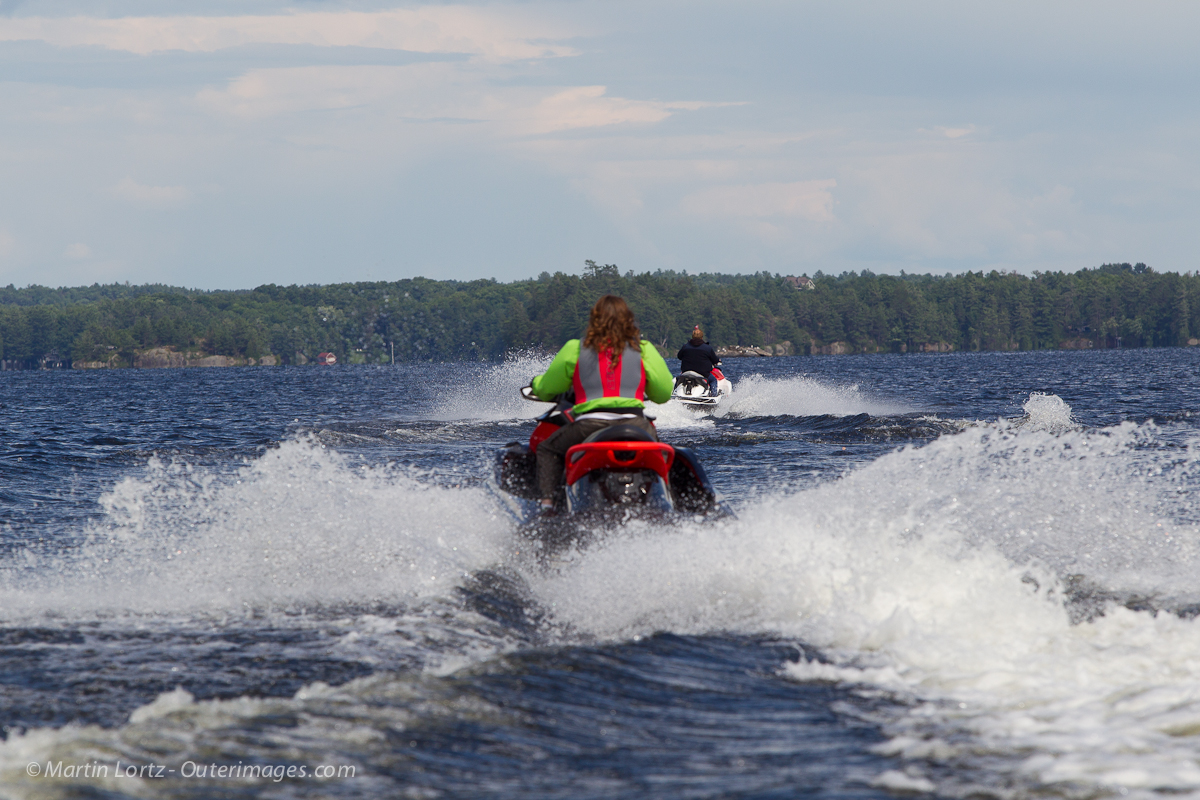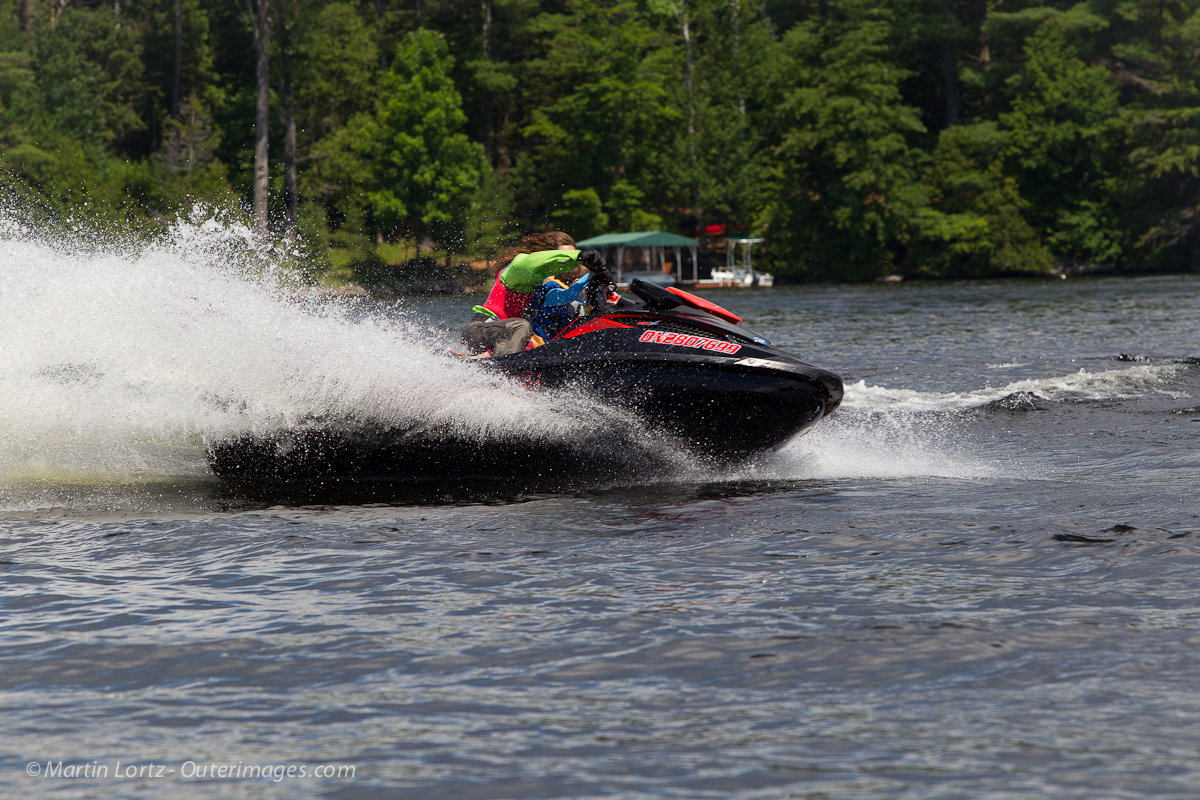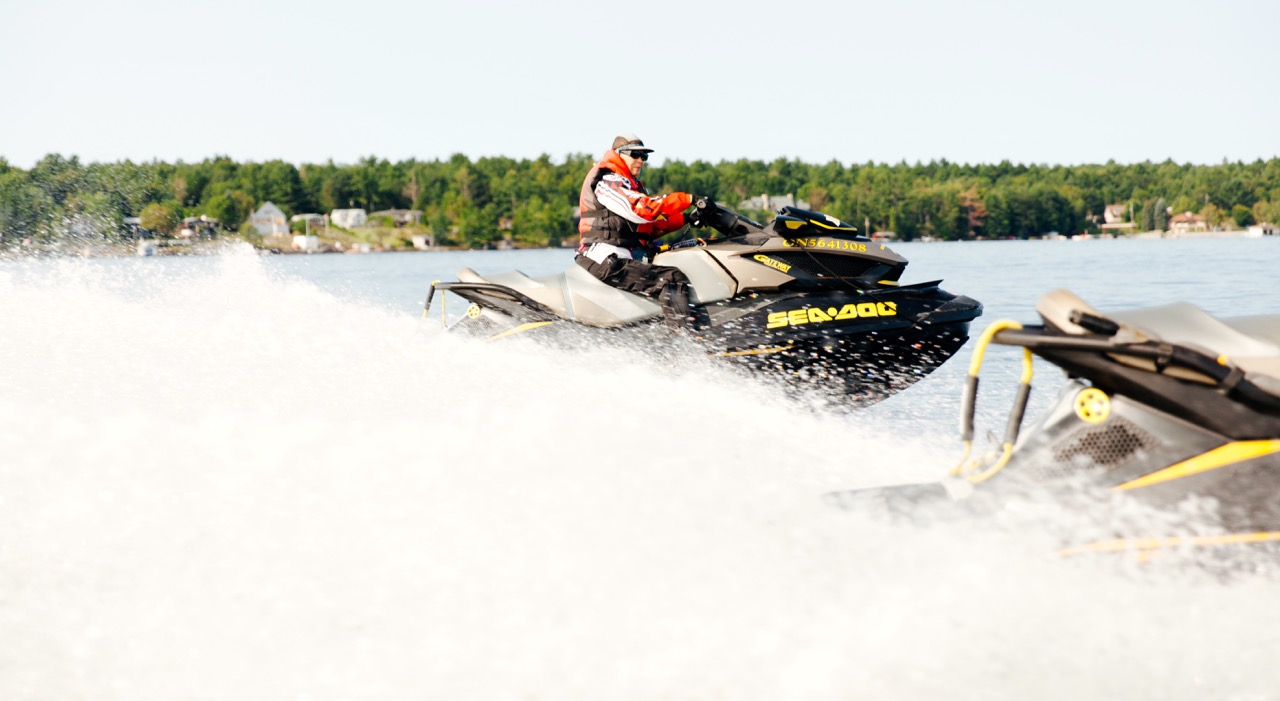Changing Winds Can Affect Jet Ski Riding…
Related: More Weather Tips
What are my top 5 Sea Doo wind tips? The answer my friend, is blowing in the wind (lol). Because on my PWC adventures on a Sea Doo watercraft, and as every PWC beginner will soon discover, moving air is the most prevalent factor. It can make or break a day on the water on your Sea Doo, jet ski or waverunner watercraft ride. So here they are…
Top 5 Sea Doo Wind Tips #1 – Wind Speed
When I check each day’s forecast before Sea Doo riding, my top priority is finding out how strong the wind’s supposed to be. If it’s 10 kph (6.2 mph) or less, I’m good to go. But if it’s edging up to 15 kph (9.3 mph), I’ll probably avoid jet ski riding large or open waterways. Instead, I’ll opt for a more protected destination like a river or lake with lots of islands and sheltered back bays. Anything more than 15 kph, and I’ll postpone the Sea Doo ride if at all possible.
When checking the forecast, it’s also important to note whether it’s predicting calm in the morning, but windy later in the day or vice versa. Either way, I may be able to squeeze a half-day of Sea Doo riding in when it’s less windy. But watch out, because a strong wind can also be the precursor of a fast moving storm system. And you don’t want to be caught out on the water in that!
Top 5 Sea Doo Wind Tips #2 – Big Waves
Waves are the most obvious consequence of wind for Sea Doo riding. The stronger the wind, the bigger the waves. So unless you’re really into wave jumping, stay home when it’s really windy. Believe me, attempting to do a long distance Sea Doo ride in big waves can be brutal on your bod. And not a lot of fun after the first 15 minutes or so.
Sea Doo riding with the wind at your back also means going the direction of the waves, which is less (but not much less) challenging. However, if the wind shifts direction or you have to turn around to go back in the opposite direction, you’ll be fighting oncoming waves the whole way. The worst condition happens when the wind is really whipping around. Then, it churns up waves and cross-waves in no predictable pattern. And it will toss you about every step of the way.
Top 5 Sea Doo Wind Tips #3 – Wind Chill
Wind feels cool. In winter, we talk about the wind chill factor. This phenomenon also occurs during the summer. Especially in unseasonably cool temperature or in the morning before the sun heats up the day. Now, add in the effect of pushing through the rapidly moving air created by your watercraft zipping forward at 60 to 80 kph (40 or 50 mph). Then, even a gentle natural breeze can feel a might chilly for Sea Doo riders. For me, if the outside temperature is 22˚C (72˚F) or less, I’ve more comfortable in long sleeves and pants that cut the wind.
Top 5 Sea Doo Wind Tips #4 – Ride Effects
Wind can also impact your Sea Doo ride in other ways. This starts with your ability to dock your jet ski normally and easily. Depending on which way its blowing, wind affects your approach to a dock for fuelling up or parking your PWC. You may have to adjust how fast or slow you come in. Also, be prepared to do more some quick adjustments. Wind whipped waves can also make navigation buoys harder to spot. And hide rocks and shoals that might otherwise be visible. And when the troughs are so deep that you can’t see over the wave crests from the seat of your jet ski, it’s easier for Sea Doo riders to become disoriented or even lost.
Top 5 Sea Doo Wind Tips #5 – Body Effects
Even when there’s only a light breeze, you have to be careful to protect yourself. I’ve already mentioned how wind cools the ambient temperature and the consequent need to wear long sleeves and pants for a Sea Doo ride. But you also need to protect your eyes from wind by wearing wraparound glasses or goggles. These can also protect from debris wind may blow into your face, Wind can also be painful on sensitive ears. In fact, that relentless buffeting of howling air can be annoying for anyone during many hours of Sea Doo riding. So consider earplugs or something else that cover your ears. I’ve even seen some jet ski riders wearing sound suppression earmuffs.
Finally, the constant breeze against your skin, from either natural wind or the speed of your Sea Doo ride, can feel very pleasant on a hot summer day. But it can also mask the warning signs of sunburn until it’s way too late and you’re painfully burnt to a crisp.
My Last Word
So what if the forecast for a calm day is wrong and you’re PWC ride is already underway? How do you know if it’s getting windy? As you go Sea Doo riding, watch the treetops along the shore for signs of movement. Check out passing docks for flapping flags or wind socks. If you start to see more sailboats on the water, you know there’s wind. And if all else fails, you’ll know it’s getting windy because that glass-like water surface starts to ripple and get choppy. Then it’s time to break wind by heading to shore!
Looking for more weather advice? Also check out: Rain Riding Tips.
Check out more riding tips and advice!
The tips and advice in this article are the opinions of the author, may not work in every situation and are intended only for the convenience and interest of the reader, who has the personal responsibility to confirm the validity, accuracy and relevancy of this information prior to putting it to their own use.




